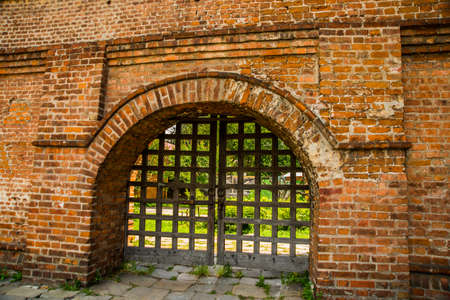Historical Roots of Church Entryways in England
The story of English church architecture is, in many respects, a story of thresholds and portals. Entryways have always been more than mere functional apertures; they serve as liminal spaces that mediate between the sacred and the secular, shaping the metaphysical experience of those who cross them. The evolution of these entryways can be traced back to the Norman period, where robust, rounded arches and deeply recessed doorways symbolised both protection and sanctity. These portals often featured intricate carvings and iconography, underscoring the significance of spiritual passage. As architectural styles shifted into the Gothic era, entryways grew in verticality and complexity. Pointed arches, elaborate mouldings, and richly decorated tympana reflected not only advancements in construction techniques but also a heightened theological emphasis on transcendence. During the Victorian revival, church architects revisited medieval forms while incorporating new materials and sensibilities of the age. The result was an eclectic blend: grand entrances with ornate stonework sat alongside simpler, more functional doors influenced by industrial practicality. Throughout each era, however, the threshold retained its symbolic resonance—a point of transition imbued with layers of cultural and spiritual meaning unique to England’s ecclesiastical heritage.
2. Symbolic Meanings: Thresholds as Spiritual Boundaries
Within the tradition of English church architecture, entryways are not merely functional apertures but are loaded with profound metaphysical symbolism. These thresholds demarcate a critical boundary between the secular and the sacred, serving as liminal spaces where physical passage is imbued with spiritual significance. Historically, the act of crossing the church threshold was conceived as an initiation—a movement from the mundane world outside to the sanctified interior where divine presence is believed to dwell.
The Liminal Space: Crossing from Secular to Sacred
English ecclesiastical entryways function as ritual boundaries. The porch or narthex often acts as an intermediary zone, preparing parishioners for the sacred rites within. The very structure and adornment of these portals reinforce this transition; carved tympanums, inscribed lintels, and symbolic motifs signal a passage not only in space but in spiritual state. This architectural choreography invites reflection on one’s intentions and spiritual readiness before entering the holy domain.
Symbolic Elements at Church Entryways
| Element | Symbolic Meaning | Typical Usage in English Churches |
|---|---|---|
| Doorway Arch | Eternal life; gateway to heaven | Norman round arches or Gothic pointed arches framing the entrance |
| Threshold Stone | Cleansing; demarcation of sacred ground | Worn stone slabs marking entry point, sometimes inscribed or consecrated |
| Tympanum Carvings | Biblical narratives; moral instruction | Depictions above doors illustrating Last Judgement or saints’ lives |
| Narthex/Porch | Liminal preparation; communal gathering before worship | Enclosed entrance spaces for prayer or catechesis prior to entering nave |
| Lintel Inscriptions | Blessings; reminders of faith and duty | Latin or English inscriptions invoking divine protection or scriptural verses |
Metaphysical Implications for Worshippers
The metaphysics of entryways in English churches extends beyond architecture into lived religious experience. Parishioners engage in a ritualised crossing that mirrors the journey of the soul towards God—leaving behind worldly distractions and symbolically entering a sanctified state. This conscious traversal underlines the distinction between profane existence and sacred encounter, reinforcing communal identity and individual piety within English ecclesiastical tradition.
![]()
3. Architectural Elements and Local Materials
Integral to the metaphysical resonance of English church entryways are their tangible architectural features—elements that are at once functional, symbolic, and deeply rooted in local tradition. Among these, lychgates stand out as uniquely English. Originally constructed to shelter coffins and mourners at funerals before entering consecrated ground, lychgates mark a physical and spiritual threshold. Typically crafted from robust local oak, their weathered timbers bear testament to centuries of use, while their design often reflects regional carpentry styles—from the intricate tracery of Kentish gates to the more stoic forms found in northern shires.
Church porches further articulate this liminal experience. Acting as transitional spaces between the secular and sacred realms, porches were frequently sites for community gatherings, legal transactions, or even marital vows. The materials used are telling: in Cotswold villages, warm limestone ashlar imparts a honeyed glow; in East Anglia, red brick mingles with flint flushwork; while in the Lake District, slate roofs and rugged stone walls speak of the surrounding fells. These choices reflect both practical considerations—what was locally available—and an enduring sense of place.
Door carvings provide a final flourish to these entryways, blending artistry with theology. Norman zigzags, Gothic foliage, or Tudor roses may adorn lintels and jambs, each motif chosen not merely for ornament but as an invocation of protection or welcome. In some parishes, craftsmen incorporated local lore—green men peering from spandrels in Sussex, or mythical beasts entwined around Somerset’s archways—rooting universal Christian narratives within a distinctly English context. The tactile evidence of chisel marks and hand-wrought ironmongery speaks to generations of artisans whose skills were shaped by both geography and faith.
4. Rituals and Customs at the Church Door
The threshold of an English church is far more than a mere architectural division between outside and within; it has long served as a liminal space charged with symbolic meaning, where ritual actions mark pivotal moments in personal and communal life. Traditionally, the church door acts as both a boundary and a gateway, hosting a range of rites that underscore the metaphysical significance of entryways in English ecclesiastical culture.
Baptisms: The First Crossing
In many historic parishes, the baptismal rite begins at the church door, reflecting the theological belief that baptism marks entry into the Christian community. Parents and godparents would present the infant at the threshold, where clergy would offer prayers for protection against evil—a vestige of ancient customs viewing the doorway as a battleground between sacred and profane realms. Only after these initial prayers would the party proceed to the font inside, symbolising transition from spiritual exclusion to inclusion.
Weddings: A Gateway to New Beginnings
Marriage ceremonies in England have likewise been shaped by threshold rituals. Historically, much of the wedding service—particularly the exchange of vows—took place just outside or within the open doorway. This custom emphasised marriage as a publicly witnessed transformation: from single to united, from separate households to a new familial unit. The act of crossing together into the nave after vows physically enacted their new shared identity.
Table: Key Rituals at the Church Threshold
| Ritual | Location | Symbolic Meaning |
|---|---|---|
| Baptism (start) | Church Doorway | Initiation, spiritual protection, entry into community |
| Wedding Vows | Threshold/Porch | Transformation, public witness, new beginnings |
| Funeral Processions (arrival) | Church Porch/Door | Passage from earthly life to sacred remembrance |
| Palm Sunday Procession | Outside to Inside via Doorway | Liturgy of movement from worldliness to sanctity |
Ceremonial Processions: The Collective Passage
The symbolism of crossing thresholds extends beyond individual rites. On occasions such as Palm Sunday or Rogationtide, congregations process through village lanes toward the church porch, often pausing for prayers at the entrance before entering as one body. Such processions reinforce communal identity and highlight collective passage from ordinary time into sacred celebration. The threshold thus becomes a focal point where individual journeys converge into shared spiritual experience.
Cultural Resonance and Contemporary Practice
These customs, while sometimes simplified in modern practice, continue to inform British cultural memory. The lingering expectation that certain pivotal moments are marked at—or just within—the church door reveals enduring metaphysical associations: thresholds are not simply crossed but are ritually negotiated. Whether welcoming new members, blessing unions, or commemorating lives past, English church entryways remain charged spaces where tradition meets transformation.
5. Entryways as Community Portals
The doorways of English churches have long transcended their functional roles, emerging as vital civic gathering points that reflect and shape the communal identity of towns and villages. Far from being mere architectural boundaries, these entryways often serve as liminal spaces—sites where the sacred and secular intermingle, and where collective memory is both celebrated and renewed.
Gathering Beyond Worship
Historically, church porches and thresholds have accommodated a multitude of civic functions. In many English communities, the church entrance was not only a point of spiritual transition but also a venue for market exchanges, legal proclamations, and public assemblies. Marriages, baptisms, and even local disputes were commonly initiated or concluded at the church doorway, imbuing it with a significance that extended well beyond religious ritual.
Architectural Expression of Belonging
The physical design of these entryways often communicates a sense of openness or invitation to the broader community. Features such as broad steps, canopied porches, and intricately carved tympanums were not just aesthetic choices; they articulated the churchs role as a focal point for communal interaction. The threshold thus becomes a metaphorical—and literal—point of access to both faith and fellowship.
Cultural Continuity Through Ritual
Traditions such as “beating the bounds,” where parishioners process around village perimeters starting or ending at the church portal, reinforce the entryway’s role in demarcating community identity. Seasonal festivals and remembrance services also frequently commence at the church doors, rooting contemporary gatherings in centuries-old customs that bind generations together.
In sum, English church entryways operate as more than transitional spaces; they are living portals through which communities continually reaffirm their shared values and collective history. Their enduring presence in the urban and rural landscape testifies to the centrality of the church—not just as a place of worship but as an anchor for civic life itself.
6. Contemporary Perspectives on Sacred Entryways
In the context of modern English church architecture, thresholds and portals remain powerful symbols, even as their physical and cultural interpretations have evolved. Today, restoration practices across the UK reflect a heightened awareness of both historical authenticity and contemporary spiritual sensibilities. Architects and conservationists grapple with the challenge of preserving original entryways—often weathered by centuries of use—while ensuring that these sacred spaces remain accessible and meaningful to present-day congregations.
Modern Interpretations of Thresholds
Contemporary architects frequently approach church entryways not merely as functional elements but as experiential transitions. The act of crossing a threshold continues to be imbued with metaphysical significance: it marks the movement from the secular to the sacred, from the everyday into a space set apart for reflection, community, and worship. Modern designs may incorporate materials or motifs that echo medieval symbolism—such as carved stone or pointed arches—but often reinterpret them in minimalist or abstract forms to suit current aesthetic preferences while retaining their emblematic weight.
Restoration Practices and Cultural Continuity
The restoration of ancient church portals now involves a dialogue between past and present. Conservation efforts are guided by principles that respect the historical narrative encoded in every stone, lintel, and threshold slab. At the same time, there is recognition that churches are living buildings, serving evolving communities. Solutions like discreet accessibility ramps or sensitive lighting schemes seek to balance inclusivity with reverence for heritage, reinforcing the portal’s role as both a literal and metaphorical point of entry for all.
The Enduring Metaphysical Resonance
Despite shifts in religious practice and societal norms, the metaphysical resonance of thresholds persists in contemporary English church architecture. Entryways continue to offer a tangible moment of pause—a liminal zone where visitors, regardless of belief, may sense a subtle transition. This enduring quality demonstrates how thresholds function not only as architectural features but also as vessels for collective memory and shared meaning. Thus, even in an age marked by change and secularisation, the portals of English churches retain their power to inspire awe, contemplation, and connection across generations.


